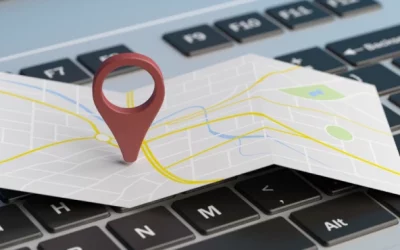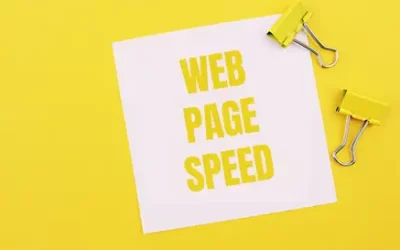Nearly 19% of Google’s SERPs now feature photos, so it’s crucial to explain to visitors and search engines what the image is about and that clicking on it will take them to a specific website or provide additional information. Content creators are aware of the value of photos that are added to a website. Images can make a blog or article come to life, whether you use them to break up long passages of text or use them to explain difficult topics. Supplying alternative text (alt text) for images is an essential practice to ensure website accessibility and image optimization. When it comes to efficiently implementing image alt text on your website or blog, a content writing service can be quite helpful.
What is an Image Alt Text?
Alt text is a written description of an online image that serves as a backup if the user is unable to view the original image.
When an image fails to load, alt text may still be present on the website to provide visitors with visual impairments with something to read aloud to them. Alt text also aids search engine bots in understanding the content of images. Its benefits include:
- Accessibility: Alt text is largely used to increase the accessibility of web content for users with visual impairments. When a screen reader comes across a picture, it reads the alt text out loud so that viewers who can’t see the image may still comprehend what it’s about.
- User Experience: Alt text enables readers to comprehend what the missing image was meant to represent when images don’t load properly due to poor connections or other technical problems. This enhances the user experience and lessens the chance that consumers will leave your page because of missing visual elements.
- Image Search: Alt text is a crucial component in the optimization of image searches. Search engines utilize the alt text of photos to determine which ones are pertinent when people look for images relating to a particular keyword. Your photographs are more likely to show up in image search results if your alt text appropriately conveys the topic of your images.
How does Image Alt Text Impact SEO?
According to Google, alt text is used to interpret the subject matter of images together with computer vision algorithms and the page’s contents. Alt text aids Google in comprehending the webpage as a whole, as well as the subject matter of the photos. It can enhance the likelihood that your pictures will show up in image search results. High-quality and pertinent alt text will ensure that your material appears in the mix of the new AI-powered snapshot of important data with Google’s introduction of Search Generative Experience (SGE). Google points out that the SGE may provide customers with a comprehensive shopping experience that includes notable alternatives, product descriptions, pricing, and photos in a single snapshot.
When developing content on a subject, consider how your target audience prefers to find answers to their questions. Google searchers often favor seeing the image directly embedded within your webpage instead of the typical blue hyperlinked search result. For instance, if a visitor is searching for ‘how to upload shorts on YouTube,’ they might find a screenshot more helpful, as it allows them to quickly grasp the process at a glance.
Therefore, providing Google with accurate information about your photos is an excellent approach to convey topic relevance if traffic from image searches is an important component of your SEO strategy.
Best Practices for Image Alt Text
Here are 8 best practices to create effective image alt text:
- Be descriptive: You should follow the content and context of the photograph.
- Include context that is relevant to the page’s topic: Add context based on the page’s content if the image doesn’t depict a well-known object or person. Depending on the website’s subject, the alt text for a stock photo of a woman typing on a computer can read “Woman researching free blogging platforms” or “Woman optimizing WordPress website for SEO.”
- Do not exceed 125 characters in your alt text: When reading this description aloud for those who are blind or visually impaired, screen-reading software often stops reading the alt text at this point, cutting off lengthy alt text at inappropriate times.
- Alt text shouldn’t begin with “picture of…” or “Image of…”: Go right to the description of the picture. From the article’s HTML source code, screen-reading software (Google) will recognize it as an image.
- Keep your keyword usage to a minimum: The target keyword for your post should only be used if it can be easily incorporated in your alt text. If not, think about using only the most crucial terms within a long tail keyword or semantic keywords. For instance, you might use “lead generation” in your alt text if your article’s head keyword is “how to generate leads,” as it might be challenging to naturally incorporate “how to” in image alt text.
- Don’t stuff your keyword into the alt text of every single image: Include your keyword in one of the body photos in your blog article if it has several. Choose the picture you believe best embodies your subject, then give it your keyword. In the surrounding media, stick to more aesthetically pleasing descriptions.
- Check for spelling mistakes: Misspelled terms in the alt text of your images may detract from the user experience or confuse web crawlers. Just like every other piece of content on the page, alt text has to be reviewed.
- Not every image needs to include alt text: For the benefit of SEO, user experience, and accessibility, you should usually provide alt text to webpage photos. However, there are certain exceptions. For example, images that are just for aesthetic purposes or that are described in the surrounding text should have an empty alt attribute.
To start optimizing your image alt text and improve your website’s performance,
To guarantee that your website is search engine optimized, it is crucial to add alt text to your photographs. Make it a practice to add an alt tag whenever you upload a picture. If you are aware that you have not been adding alt tags to your images, set aside some time to go through them and add appropriate, illustrative alt text to every image on your website. Your website’s images can be accurately explained, improving both user experience and search engine exposure, with the help of professional content writing services.




